Abstract
OBJECTIVE: To examine the effect of adjusted average per capita cost (AAPCC) rate and volatility on Medicare risk plan enrollment at the county level. DATA SOURCES: Secondary data from the Health Care Financing Administration's office of managed care and other sources were merged to create comprehensive data on all Medicare risk plans in 3,069 of the 3,112 U. S. counties in December 1996. STUDY DESIGN: A two-step least squares regression was estimated to examine the effects of AAPCC rate and volatility, commercial HMO enrollment, market factors, and characteristics of the county population on Medicare HMO enrollment. The model was also used to simulate the effects of the Balanced Budget Act of 1997. Data from the Health Care Financing Administration were merged with other sources at the county level. The Federal Information Processing Standards code and a crosswalk file matching that code with the county name linked the data across sources. PRINCIPLE FINDINGS: The AAPCC rate has a small positive effect on the probability of Medicare HMO availability and enrollment. However, commercial HMO enrollment has a much stronger positive effect on Medicare HMO enrollment. Volatility has a negative effect on the probability of any Medicare HMO enrollment. CONCLUSIONS: The results suggest that payment changes enacted as part of the Balanced Budget Act will have a limited effect on Medicare HMO enrollment, especially in rural areas. Other policy changes are needed to stimulate Medicare HMO enrollment.
Full text
PDF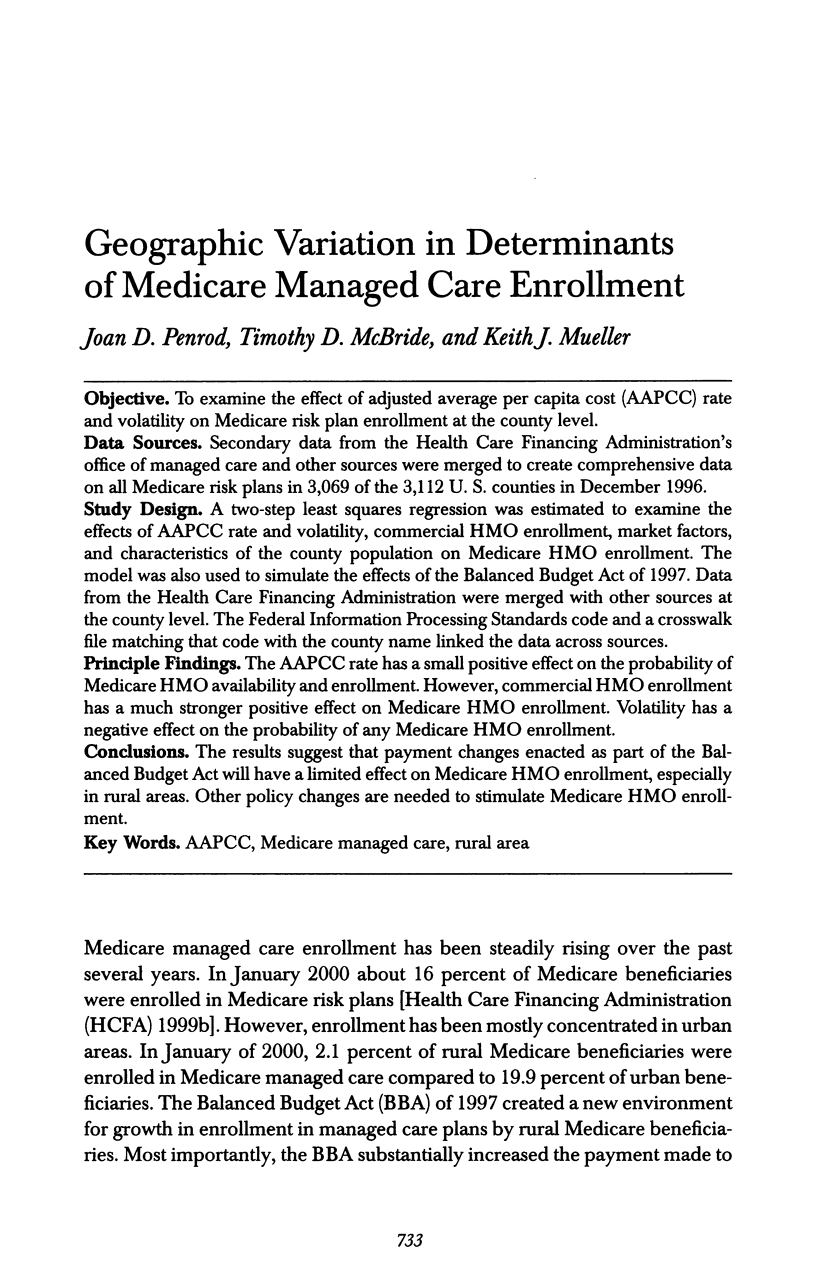
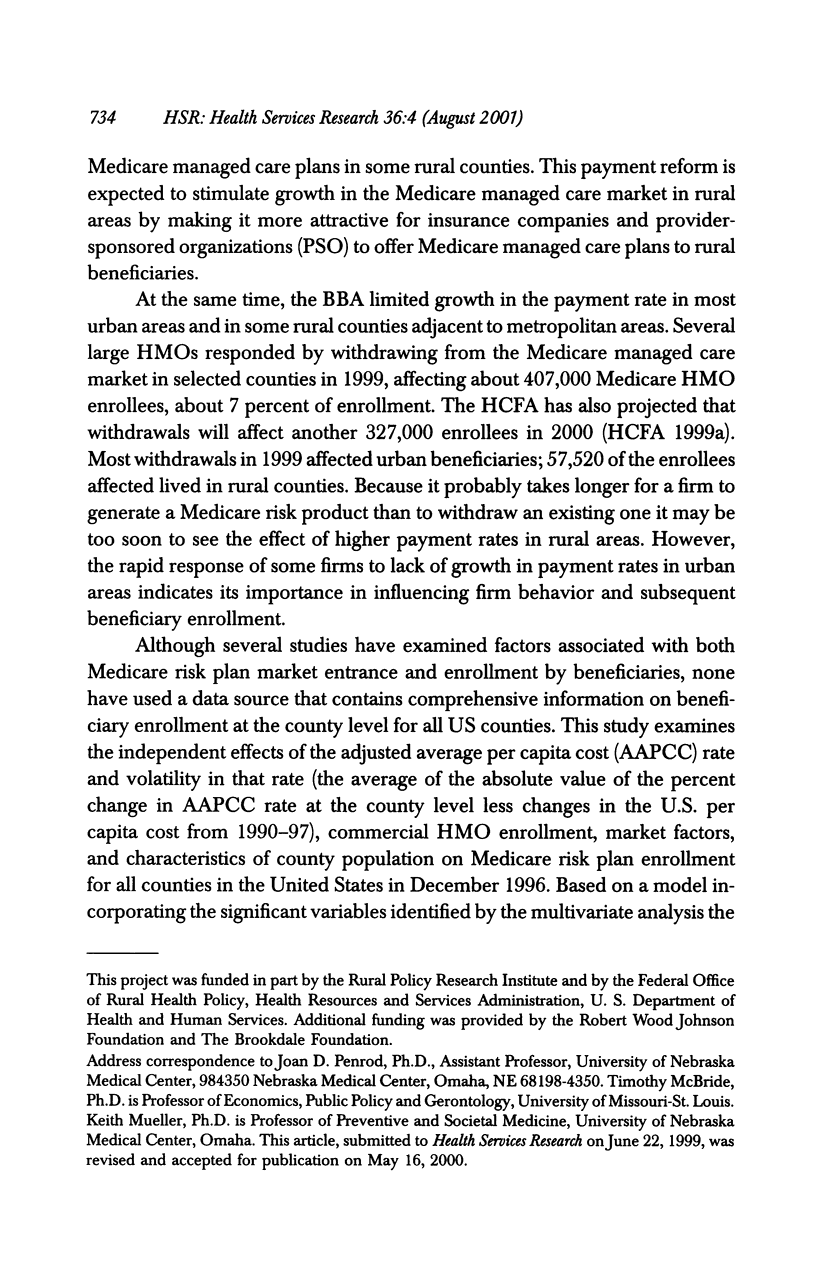
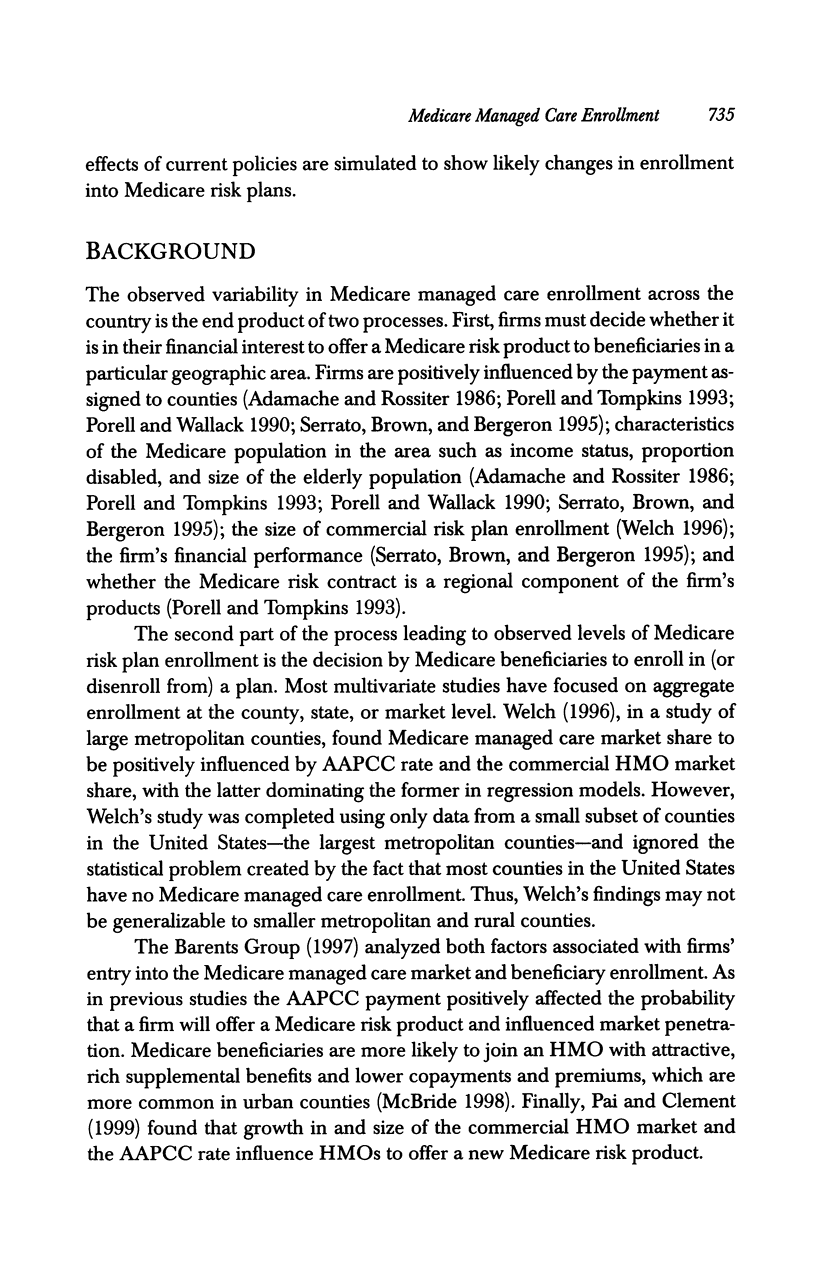
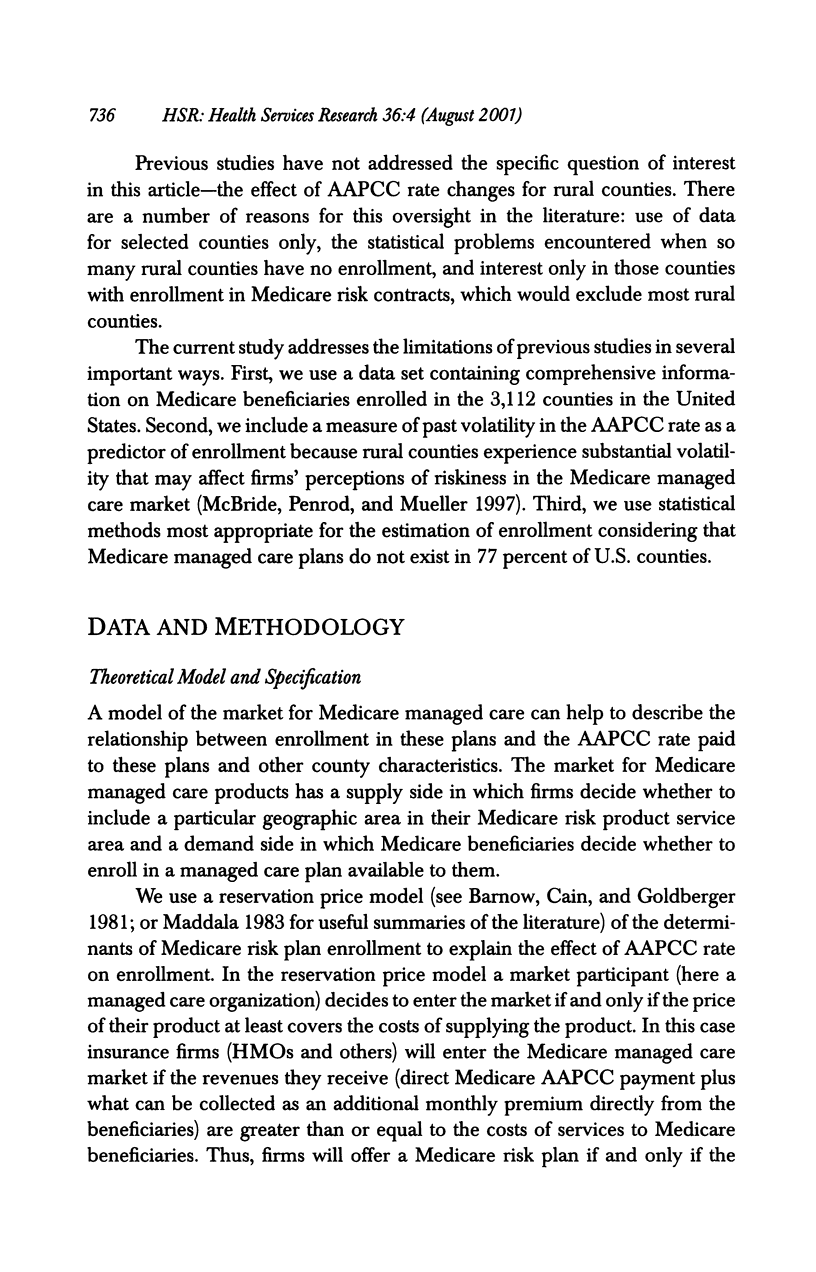
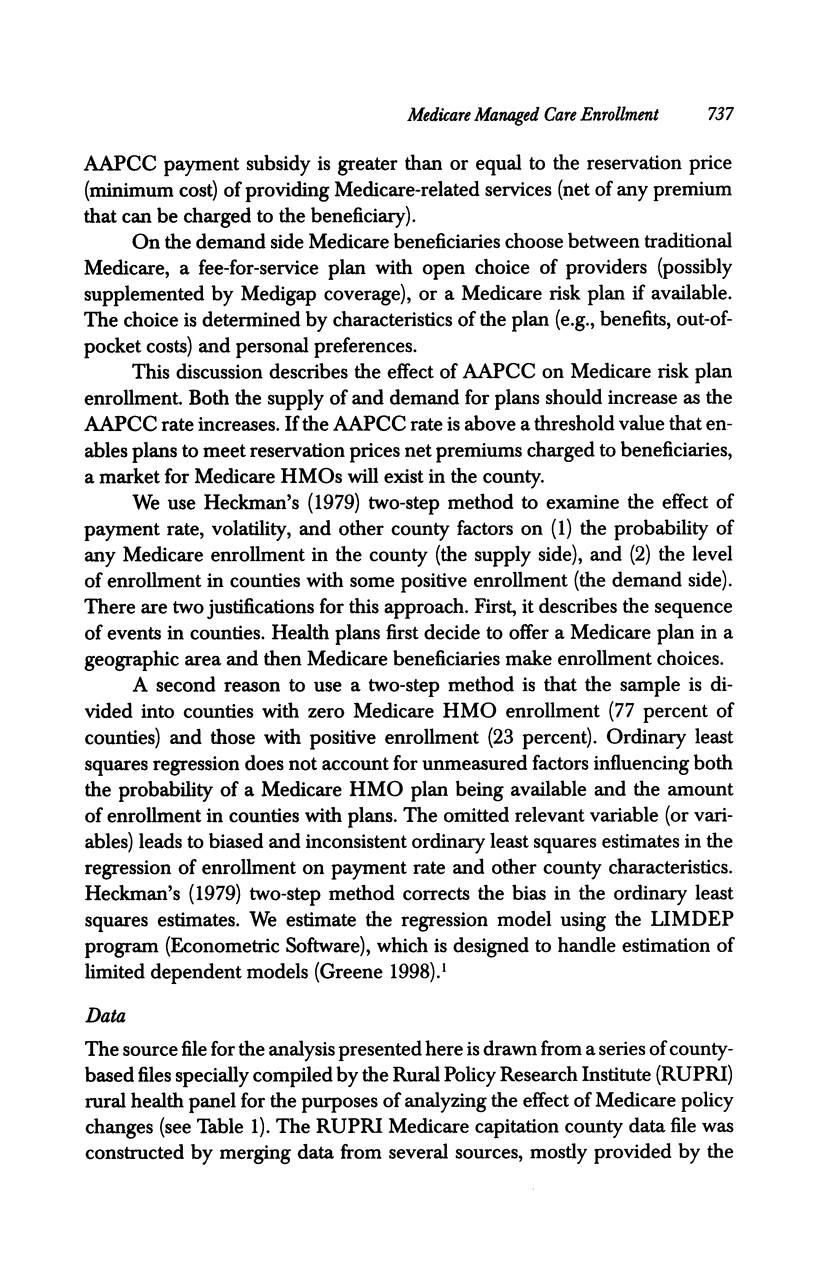
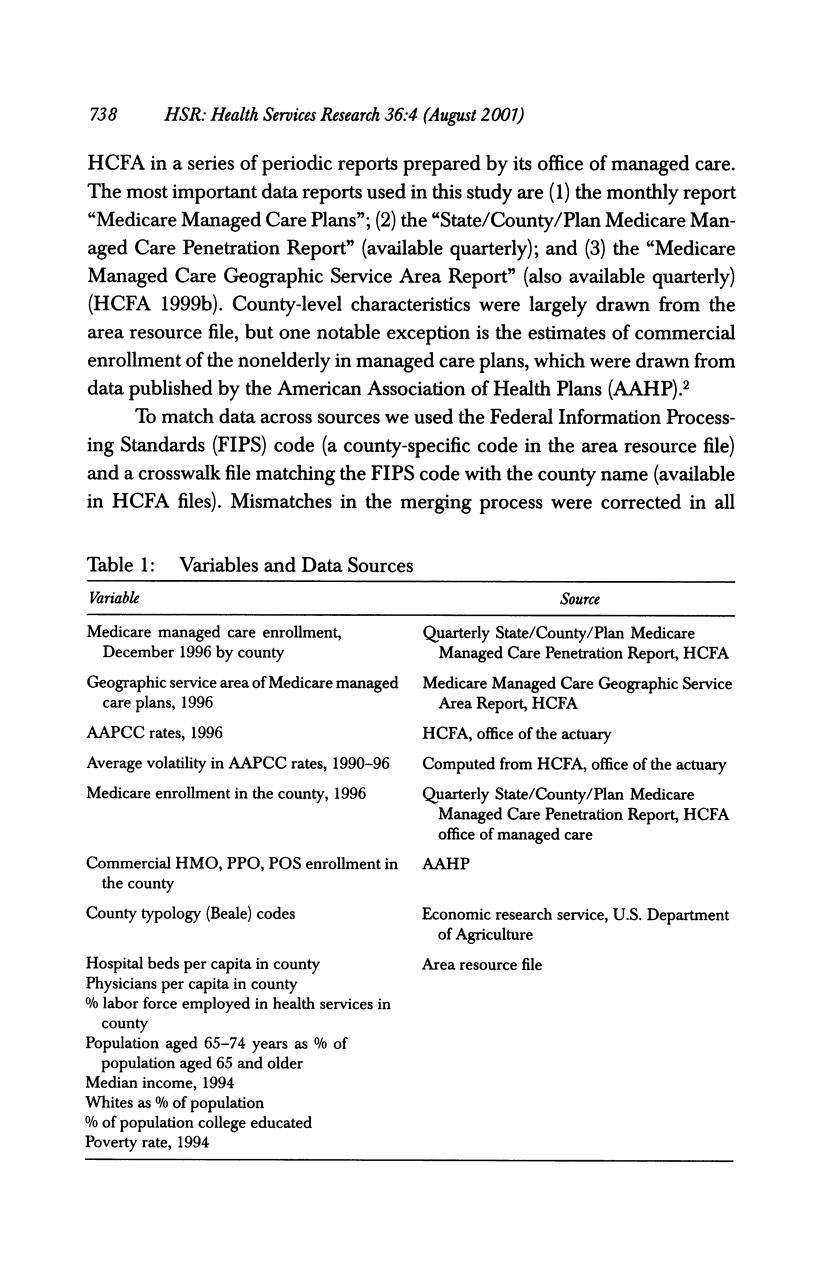
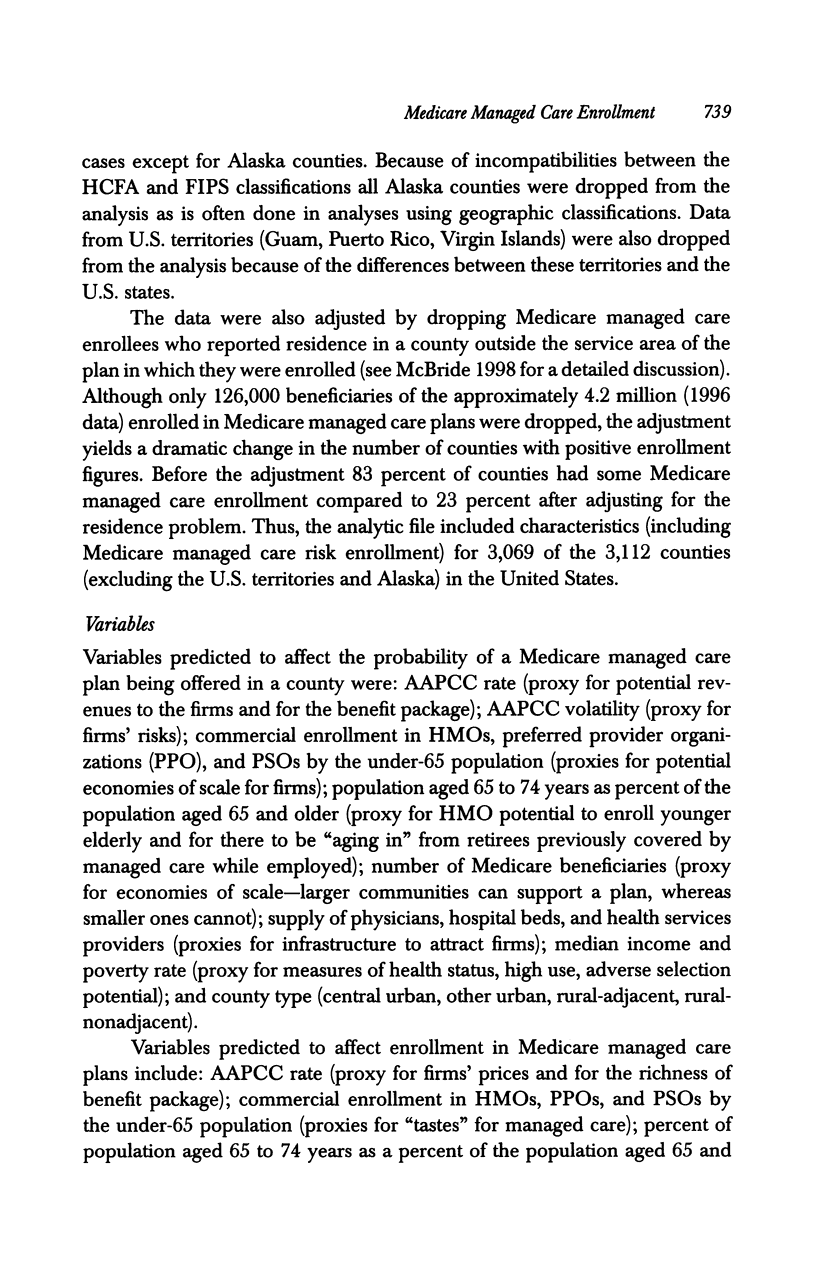
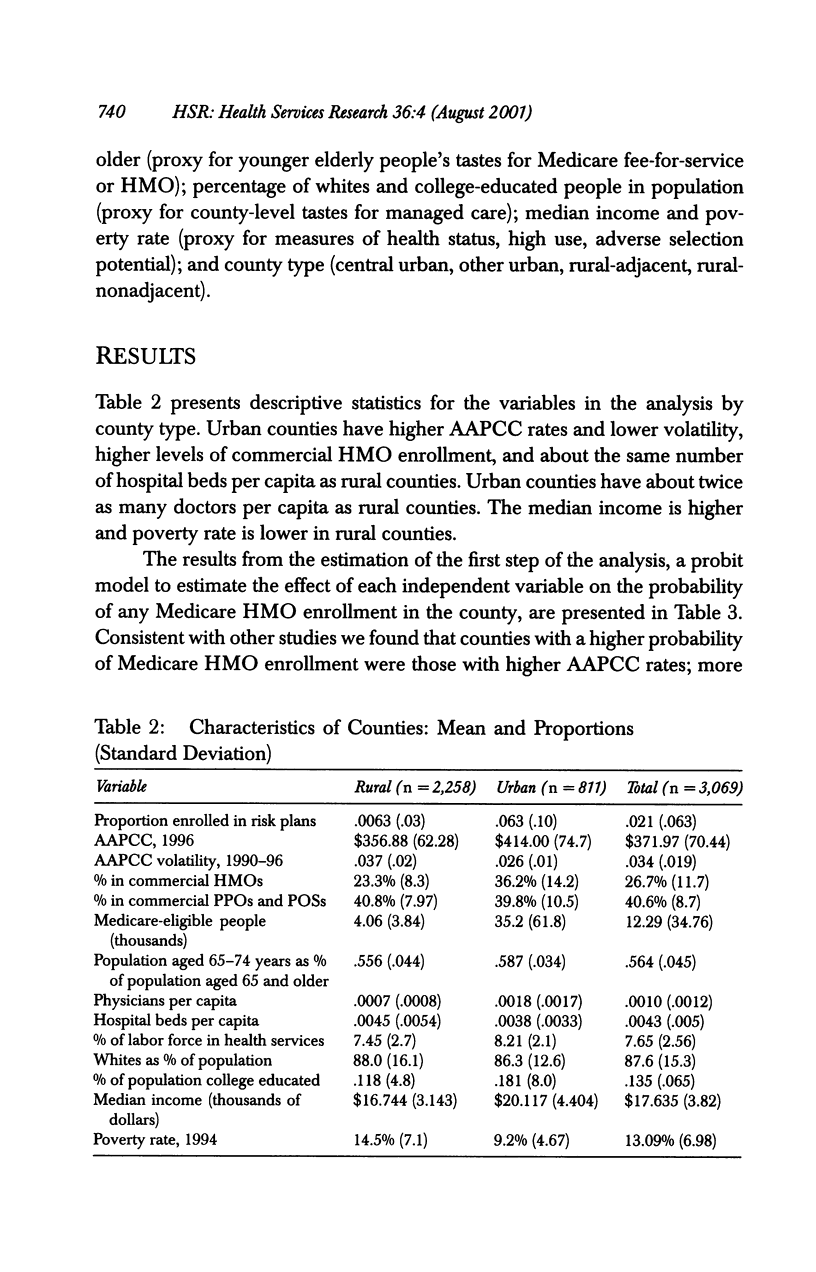
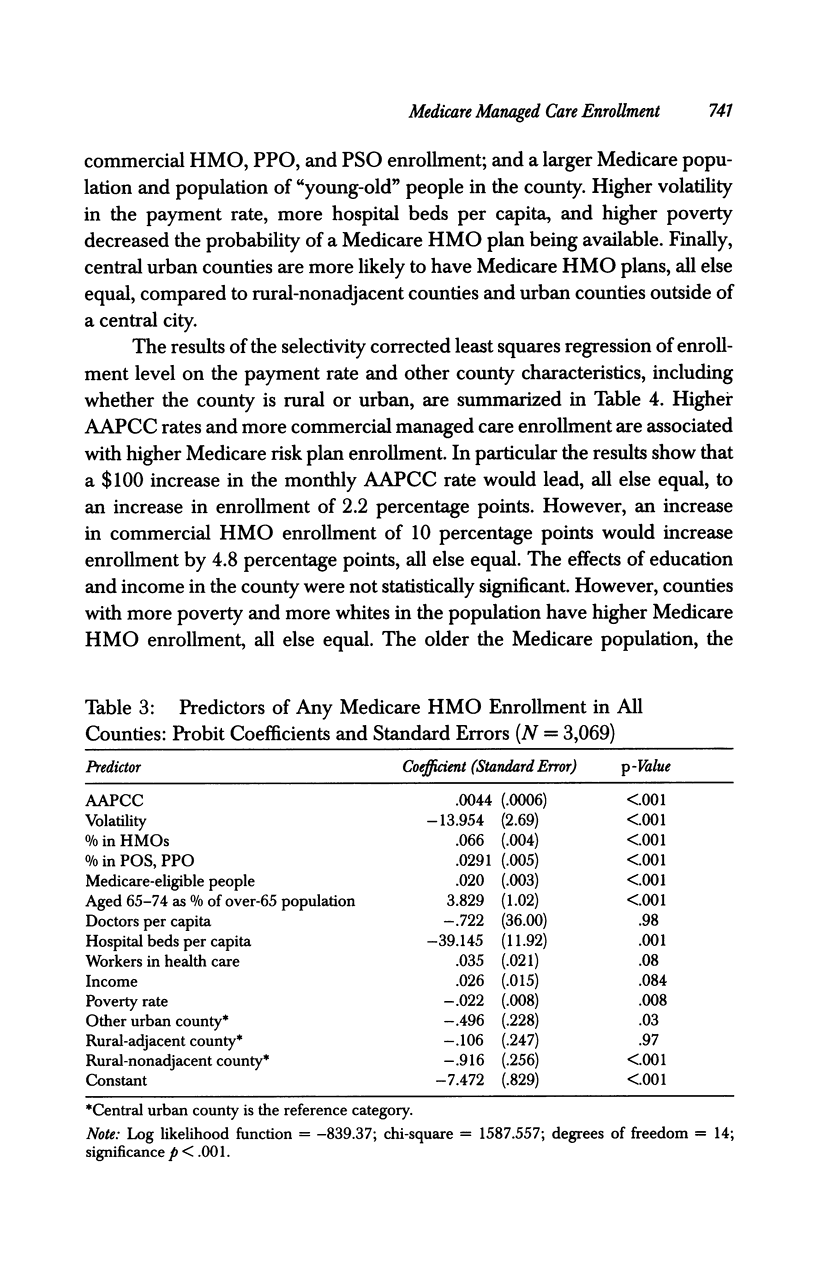
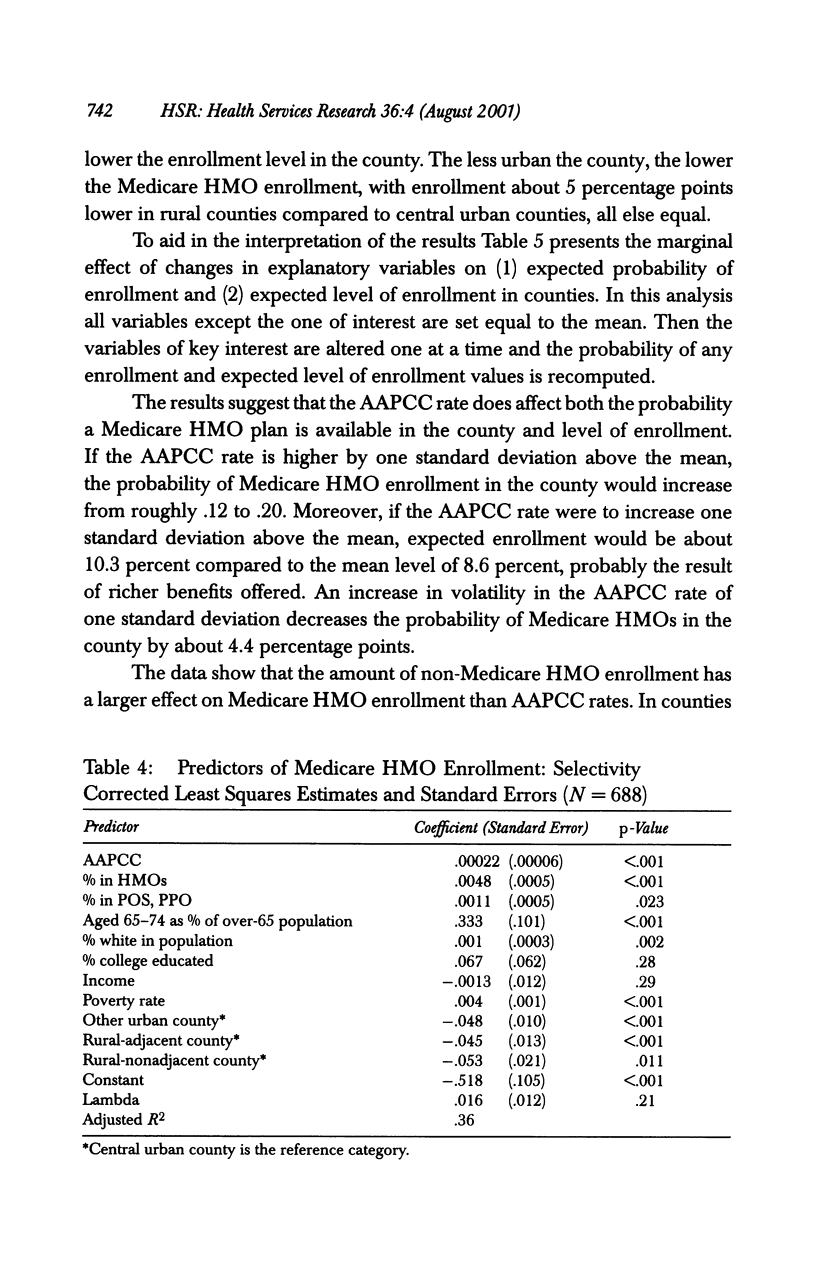
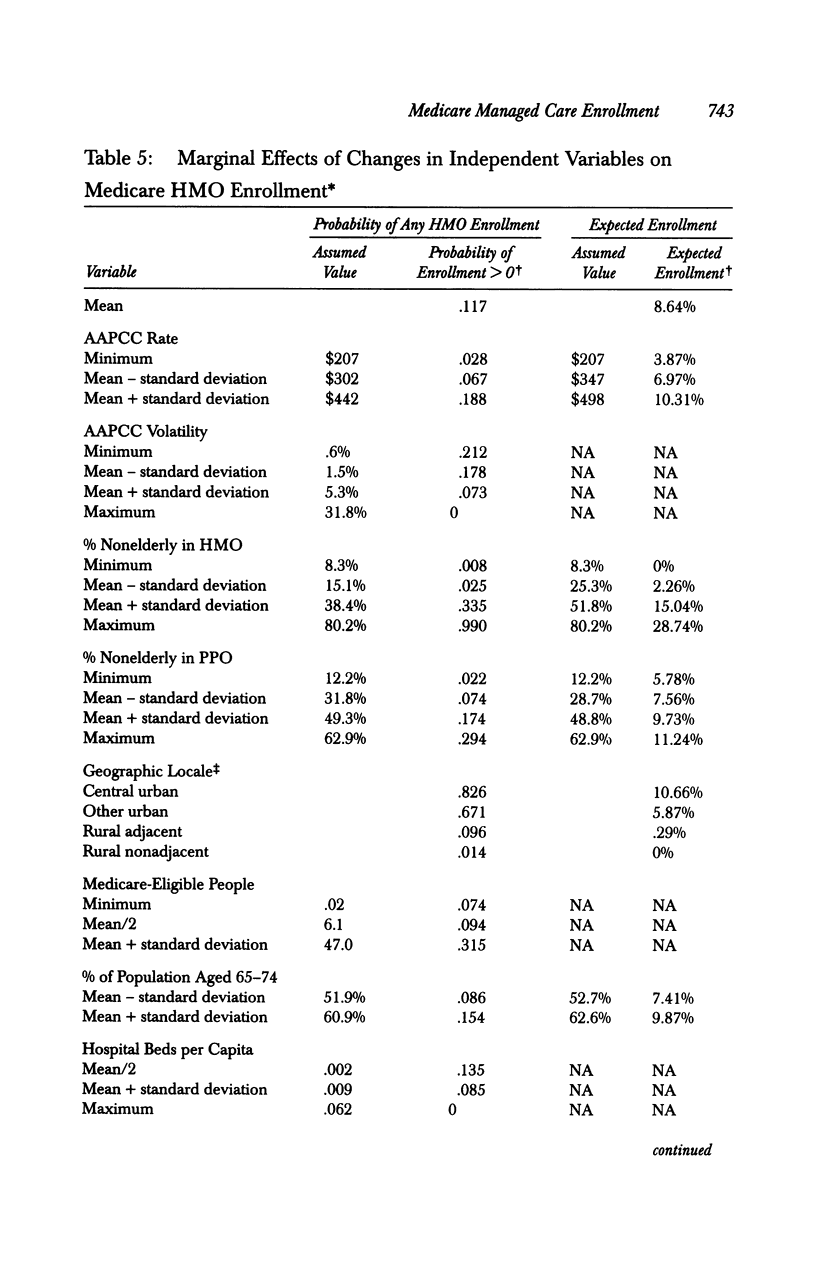
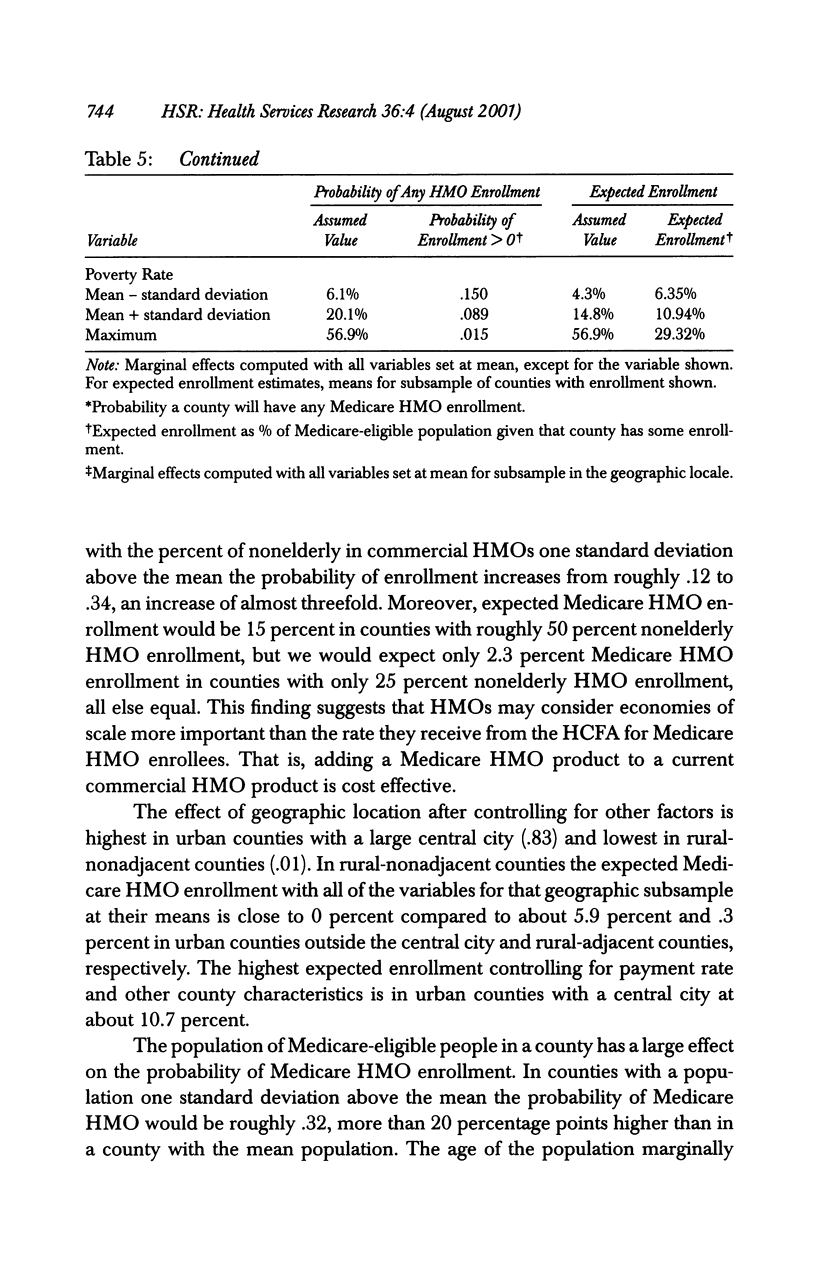

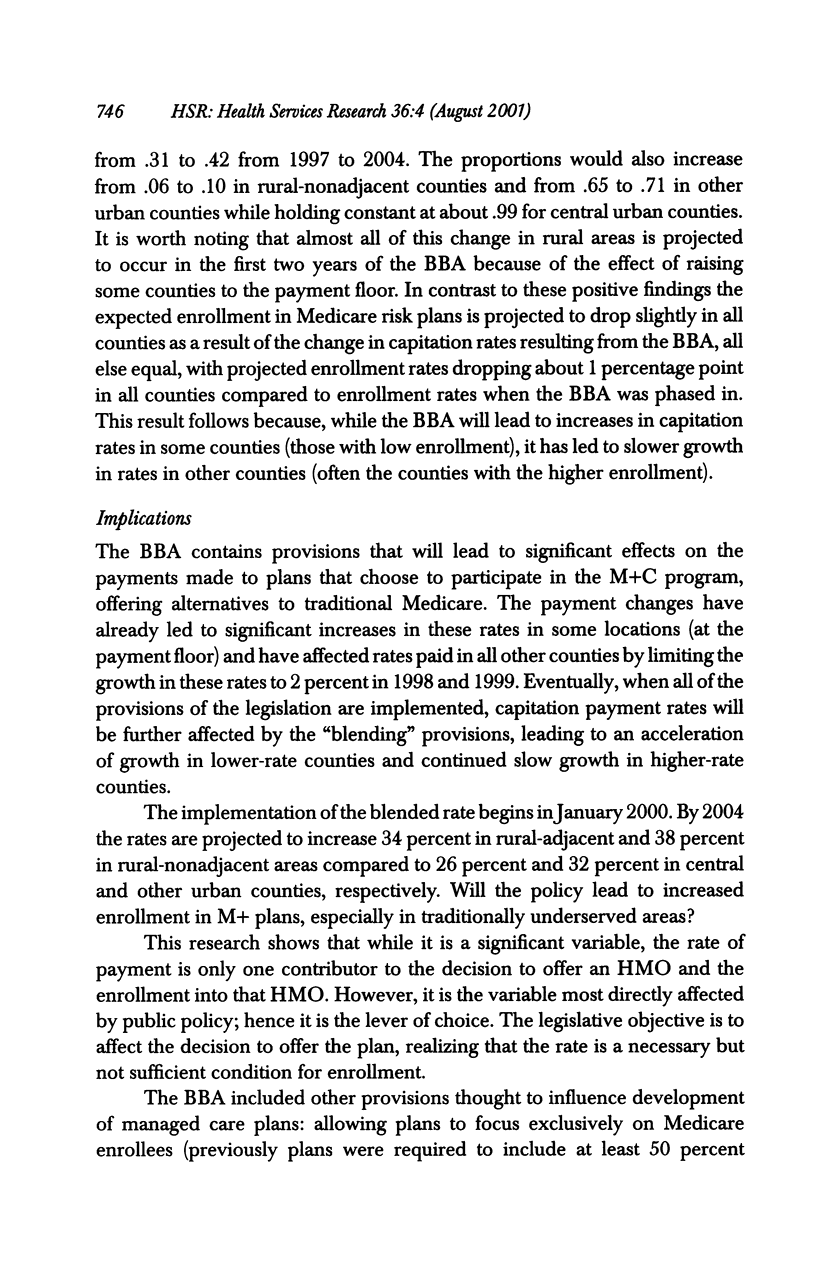
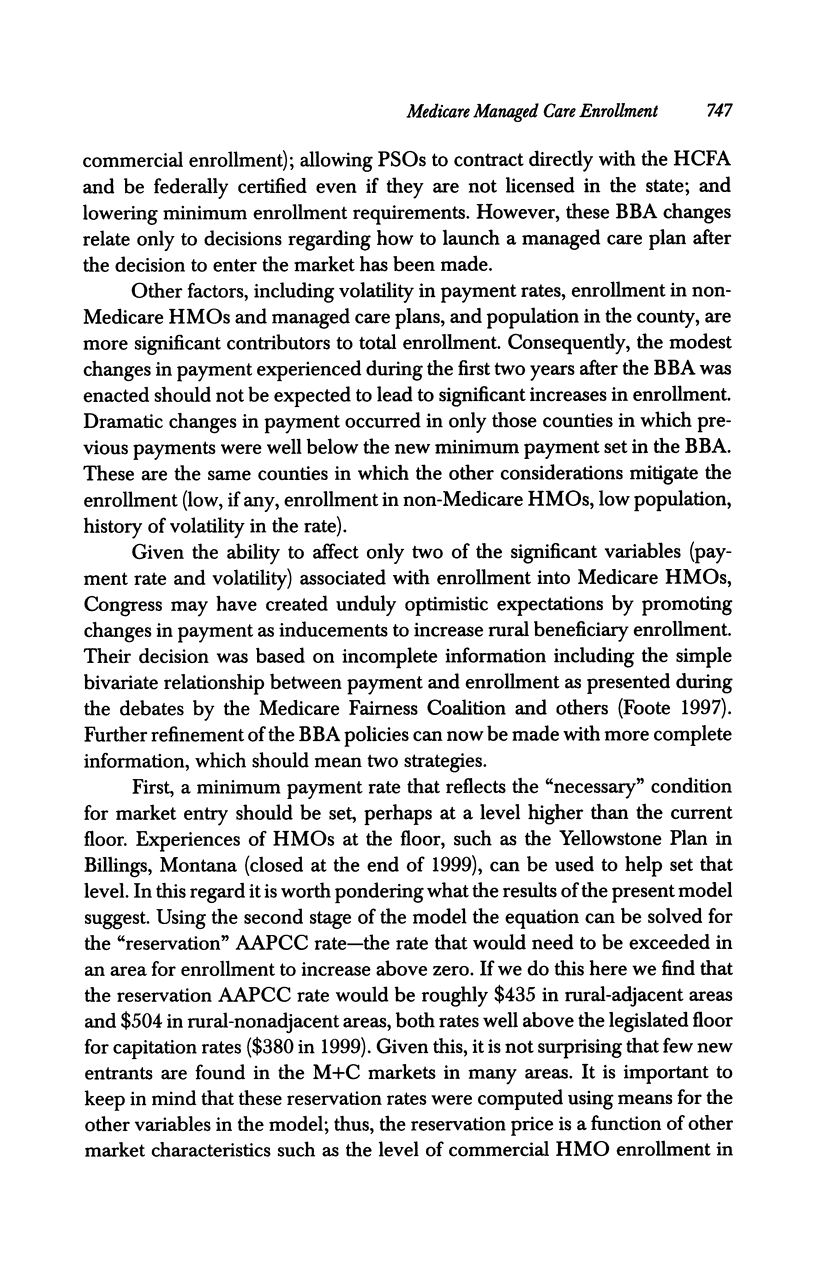
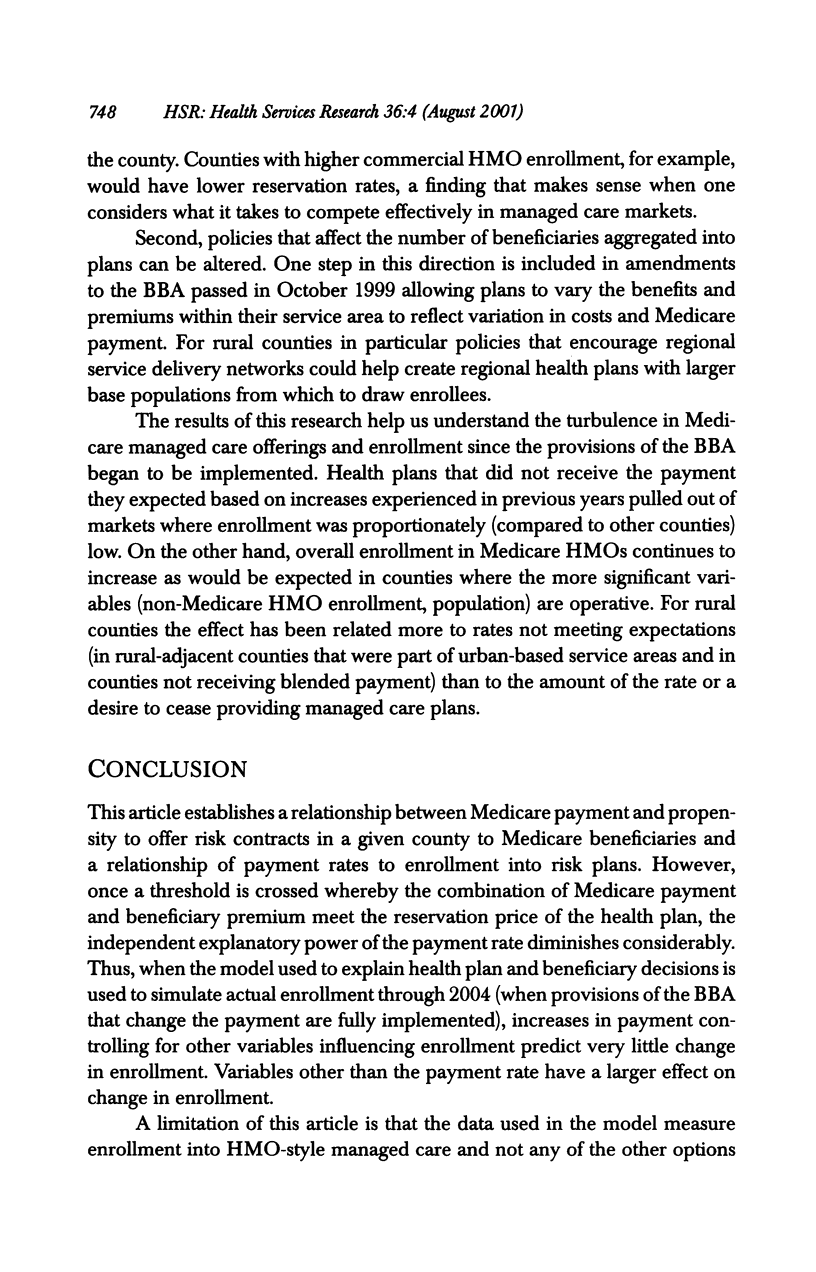
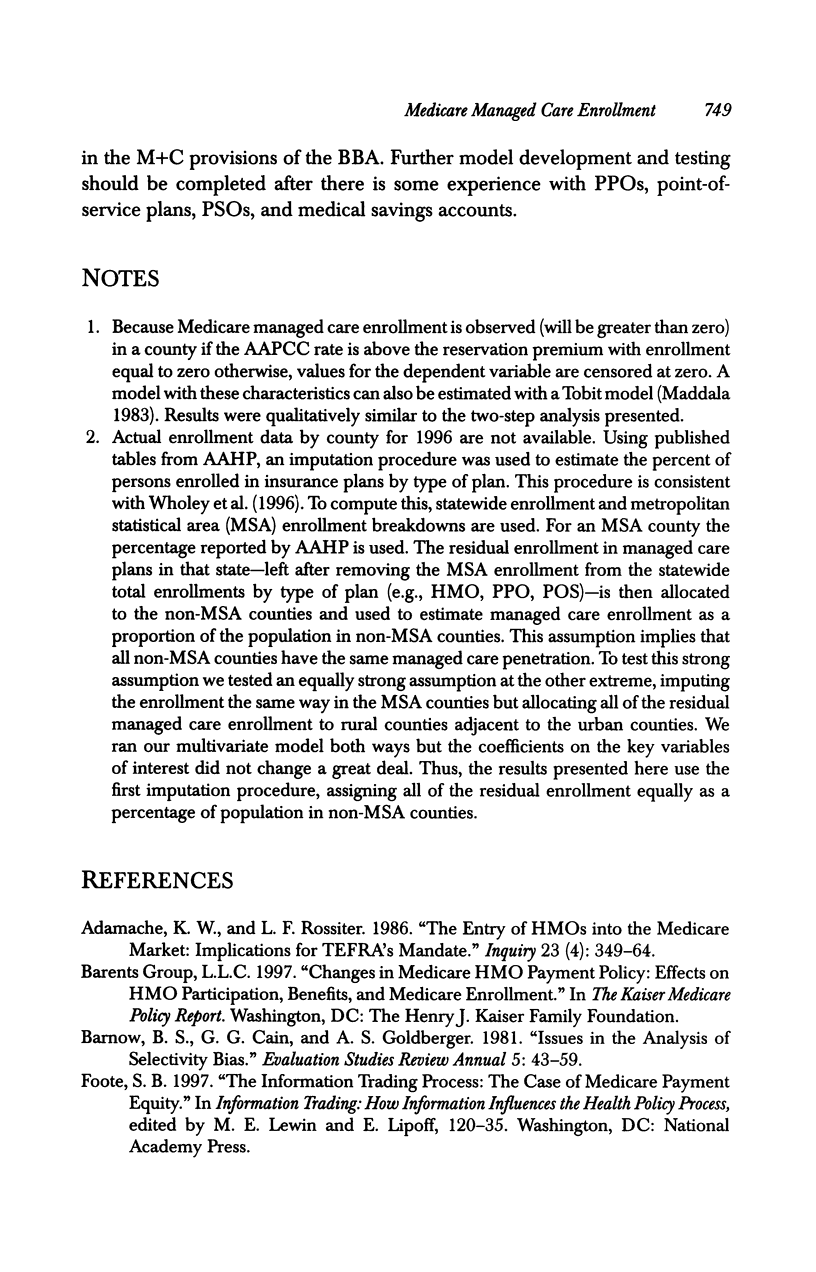
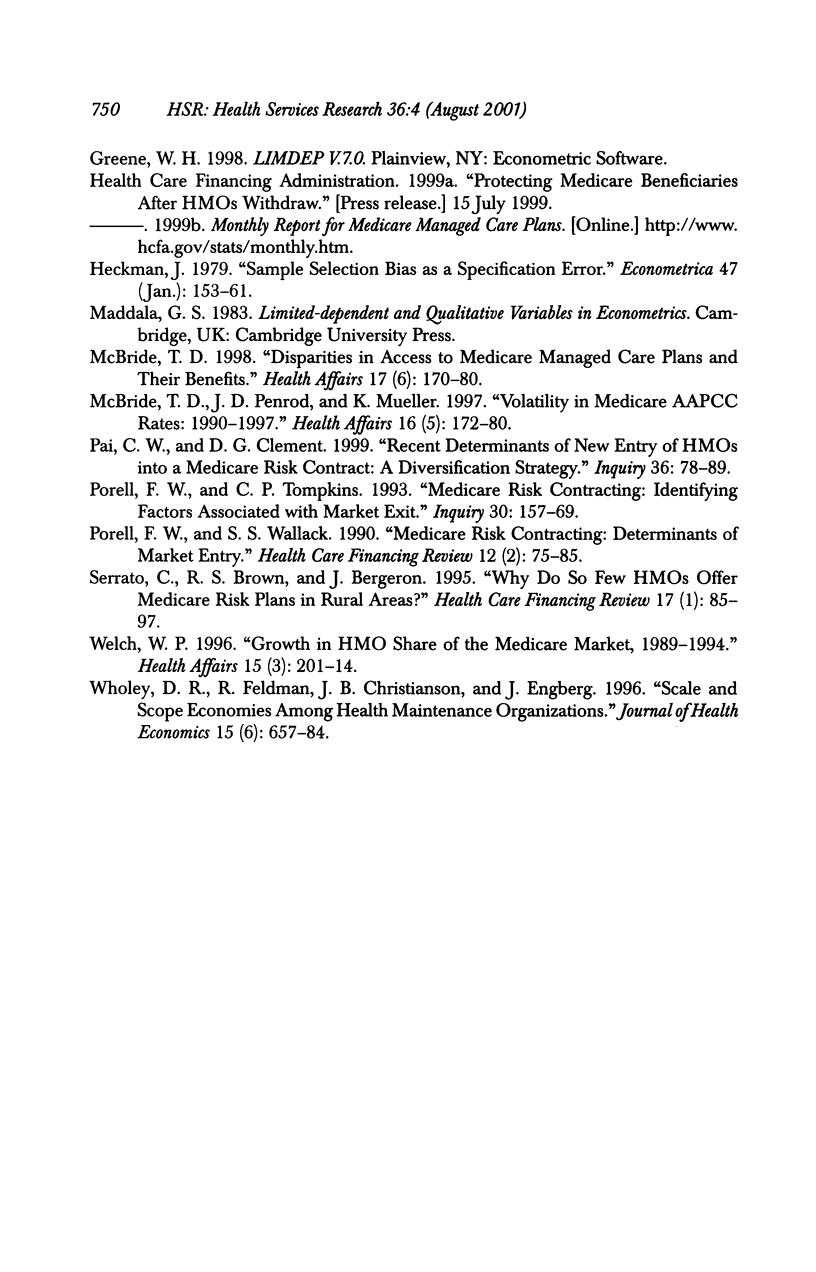
Selected References
These references are in PubMed. This may not be the complete list of references from this article.
- Adamache K. W., Rossiter L. F. The entry of HMOs into the Medicare market: implications for TEFRA's mandate. Inquiry. 1986 Winter;23(4):349–364. [PubMed] [Google Scholar]
- McBride T. D. Disparities in access to Medicare managed care plans and their benefits. Health Aff (Millwood) 1998 Nov-Dec;17(6):170–180. doi: 10.1377/hlthaff.17.6.170. [DOI] [PubMed] [Google Scholar]
- McBride T. D., Penrod J., Mueller K. Volatility in Medicare AAPCC rates: 1990-1997. Health Aff (Millwood) 1997 Sep-Oct;16(5):172–180. doi: 10.1377/hlthaff.16.5.172. [DOI] [PubMed] [Google Scholar]
- Pai C. W., Clement D. G. Recent determinants of new entry of HMOs into a Medicare risk contract: a diversification strategy. Inquiry. 1999 Spring;36(1):78–89. [PubMed] [Google Scholar]
- Porell F. W., Tompkins C. P. Medicare risk contracting: identifying factors associated with market exit. Inquiry. 1993 Summer;30(2):157–169. [PubMed] [Google Scholar]
- Porell F. W., Wallack S. S. Medicare risk contracting: determinants of market entry. Health Care Financ Rev. 1990 Winter;12(2):75–85. [PMC free article] [PubMed] [Google Scholar]
- Serrato C., Brown R. S., Bergeron J. Why do so few HMOs offer Medicare risk plans in rural areas? Health Care Financ Rev. 1995 Fall;17(1):85–97. [PMC free article] [PubMed] [Google Scholar]
- Welch W. P. Growth in HMO share of the Medicare market, 1989-1994. Health Aff (Millwood) 1996 Fall;15(3):201–214. doi: 10.1377/hlthaff.15.3.201. [DOI] [PubMed] [Google Scholar]
- Wholey D., Feldman R., Christianson J. B., Engberg J. Scale and scope economies among health maintenance organizations. J Health Econ. 1996 Dec;15(6):657–684. doi: 10.1016/s0167-6296(96)00499-7. [DOI] [PubMed] [Google Scholar]


